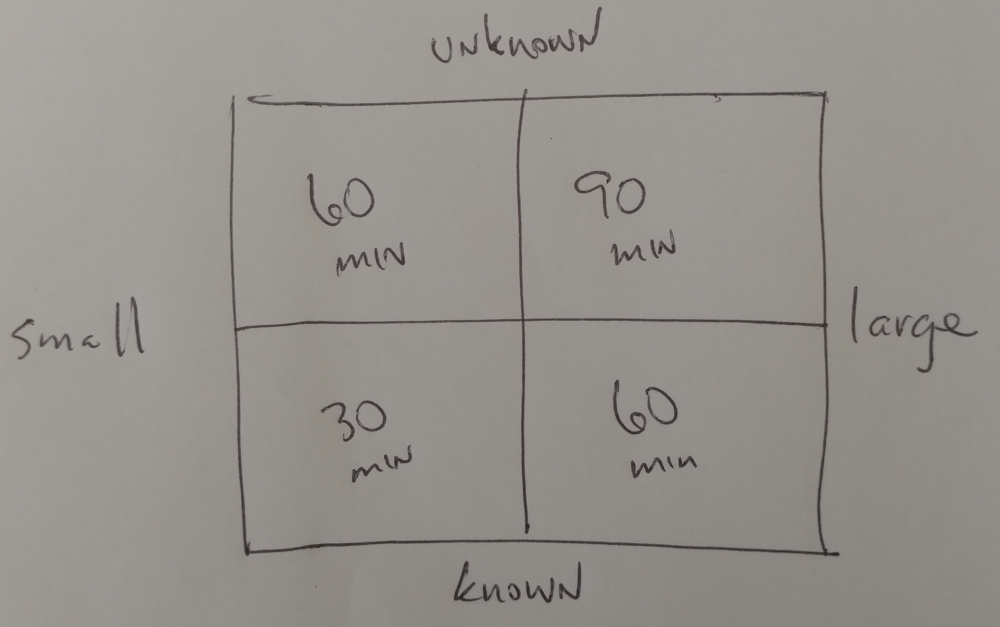My preferred definition of ‘project’ is from David Allen (of GTD fame): Projects = Your outcomes that require more than one action step. We don’t often think in how small these action steps are, but as of late I’ve been more aware of it. For example, my younger son needed a dojo patch sewn on his …
Category Archives: Productivity
What Can You Achieve in 30, 60, & 90 Minutes?
When I ask my clients where they found the biggest benefit in my How to Use a Calendar program, they often reply: “Scheduling for 30, 60, or 90 minutes.” It’s tempting to block off a massive chunk of time for a big project. Whether that massive chunk of time is a an afternoon, a day, …
Continue reading “What Can You Achieve in 30, 60, & 90 Minutes?”
Switching Costs
In CBS’s world adventure race program ‘The Amazing Race’ there’s a game element called the ‘Detour’. The ‘Detour’ is a team activity requiring completion before continuing on the race itself. Each ‘Detour’ includes two activities – each team needs to select one from an opaque two- or three-word description of each. The goal is to …
Both – or the Underly Deceit of Focus
As I write this, I’m slowly, steadily, recovering from a running injury. Pain so bad in my right knee that it’s painful to walk and stand. A visit to the sports chiropractor diagnosed the problem as a lack of flexibility in my left hip. The right-side of my body continually compensated for this lack of flexibility, …
To a Stronger Second Half
It’s the first week of a January 2017. I’d like to raise a glass of my homebrew to the new year. When I crack open the bottle and pour it gently, perfectly into a glass half the size of the bottle, it’ll be brilliantly clear. So clear you can see the other side of the …
Where are You in Your Calendar?
Your email inbox is one thing. Other than turning the spam filter to 11, having an unguessable address, and or sending everything to dev/null – if you have an email address – it’s going to receive email. Your email inbox is, painfully, for others. You’re calendar is something completely different. Nothing goes on your calendar …
The Before 2020 List
A few years back, when the weather wasn’t conducive for playing kubb outside, I started a mindful meditation practice. It quickly provided me much the same mind calming benefit indoors as kubb does outdoors. After steadily building a daily practice for about a year, my schedule shifted, my priorities shifted. Today my practice is much …
Estimate 2x the 1st Time
Over the weekend, I replaced a broken bulb in my van’s tail lights. The van told me which one was broken. A quick YouTube search told me how to fix it, and a quick Google search told me the part number. Easy. So, I headed to my neighborhood auto parts store and picked up a …
Could
Your Calendar is Your Humanity
Before I understood how to use a calendar, I had blank, 3*5 index cards. I’d carry a fat stack of them, bound with a bulldog clip, in my messenger bag. I’d use them for everything; idea capture, task capture, ad hoc business cards, inspirational quotes, everything. One discreet notion per index card, detailed specifics on …
